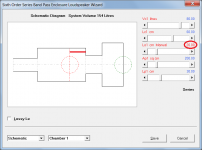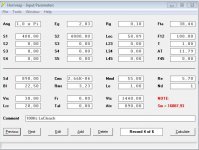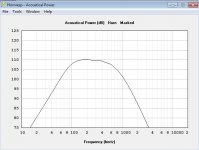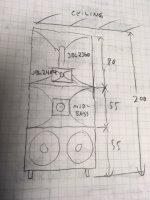David...so instead of a 4ths baffle being at the back of the vented chamber with the vent on the front wall. The driver is on the bottom with the vent on the front wall?
In the case of a series tuned 6th order box...what were thr old assumptions about druver and vent layouts? What are the new ones?
In mobile applications i see alot of 6th with a vertical chamber layout and front venting with the rear chamber vent at the back of the enclosure.
In the case of a series tuned 6th order box...what were thr old assumptions about druver and vent layouts? What are the new ones?
In mobile applications i see alot of 6th with a vertical chamber layout and front venting with the rear chamber vent at the back of the enclosure.
Hi Etocynned,
In effect, yes.
The assumptions are the same as those for the BP4 alignment.
The default BP6S model assumes that for each chamber, the driver diaphragm is located at one end, with the associated port tube at the other end. The offset driver model shifts the position of the driver in exactly the same way as for the BP4 model, as shown in the schematic. Either one or both sides of the driver can be offset.
The attached example shows a BP6S design with the driver offset by 20 cm in chamber 1, but not offset in chamber 2
Kind regards,
David
so instead of a 4ths baffle being at the back of the vented chamber with the vent on the front wall. The driver is on the bottom with the vent on the front wall?
In effect, yes.
In the case of a series tuned 6th order box...what were thr old assumptions about druver and vent layouts? What are the new ones?
The assumptions are the same as those for the BP4 alignment.
The default BP6S model assumes that for each chamber, the driver diaphragm is located at one end, with the associated port tube at the other end. The offset driver model shifts the position of the driver in exactly the same way as for the BP4 model, as shown in the schematic. Either one or both sides of the driver can be offset.
The attached example shows a BP6S design with the driver offset by 20 cm in chamber 1, but not offset in chamber 2
Kind regards,
David
Attachments
P.S. They let me back into Canada!😉
Pleased to hear that you were allowed back in 🙂.
The attached example shows a BP6S design with the driver offset by 20 cm in chamber 1, but not offset in chamber 2.
If the driver is offset in both chambers, the BP6S has the same topology as a tapped horn.
That questions stands squarely in the design stage of your endeavor. You have to think it through to get that kind of result. Basically you want a horn profile that is as short as is practicle in the ability to produce the results you desire. Back to Hornresp. (hint two people have given you a head start on the best option here)Thanks! All advice is welcome. Is LeCleach suitable at short listening distances? I heard the opposite. My listening distance is about 3m, maybe a little less.
The reason for looking at the Tractrix was mostly that I was concerned about "horn honk", and read the Tractrix with 90 degrees flare tangent is supposed to avoid this. But as I said I have not been able to hear any of these horns so far. No horn owners in the neighborhood.. My horn size is restricted to about 80x50cm mouth area, and about 85cm depth, including back chamber. I put some numbers into Hornresp, and got this:
Attachments
Last edited:
The reason for looking at the Tractrix was mostly that I was concerned about "horn honk", and read the Tractrix with 90 degrees flare tangent is supposed to avoid this. But as I said I have not been able to hear any of these horns so far. No horn owners in the neighborhood.. My horn size is restricted to about 80x50cm mouth area, and about 85cm depth, including back chamber. I put some numbers into Hornresp, and got this:
What driver are you using?
The most important is that it cover up to about 650Hz, to match my JBL2360 midrange horns. If it covers down to about 100Hz it would be fine. 150Hz is also ok, and this seems to be achievable with a short Tractrix horn, with 90 degree flare tangent at the mouth, and the same mouth area (80x50cm). The bass is BR, with 200l volume, with 2x Faital 15FX560. I think this will work just fine up to 150Hz or more.What is the frequency range that you want this horn to cover? It's passband?
Last edited:
Hi guys. And ladies
Jumping in late here
I have two 8” peerless drivers that I want to use for a full range horn. Any help with and plans that someone may have. I can make them up and do all the test and post what I get from them. I’d like to mount the drivers in a 1sf box mounted to the horn lens with every size opening i need
This first pic is what I’m would like it to be like but I’m not locked in on it
I just need to know how wide and deep it should be and how large the opening of the driver. I can add a tweeter hanging in the middle of it or on top
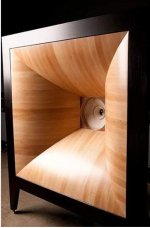
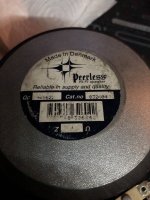
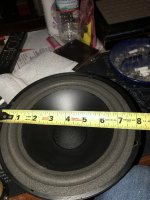
Jumping in late here
I have two 8” peerless drivers that I want to use for a full range horn. Any help with and plans that someone may have. I can make them up and do all the test and post what I get from them. I’d like to mount the drivers in a 1sf box mounted to the horn lens with every size opening i need
This first pic is what I’m would like it to be like but I’m not locked in on it
I just need to know how wide and deep it should be and how large the opening of the driver. I can add a tweeter hanging in the middle of it or on top



The most important is that it cover up to about 650Hz, to match my JBL2360 midrange horns. If it covers down to about 100Hz it would be fine. 150Hz is also ok, and this seems to be achievable with a short Tractrix horn, with 90 degree flare tangent at the mouth, and the same mouth area (80x50cm). The bass is BR, with 200l volume, with 2x Faital 15FX560. I think this will work just fine up to 150Hz or more.
OK you have answered my question. Now NEO Dan's question is a good one. Your efficiency is pretty high. As in almost to high to be believable.
OK you have answered my question. Now NEO Dan's question is a good one. Your efficiency is pretty high. As in almost to high to be believable.
It's 1pi, he must be building them in-wall close to the intersection of the floor and wall.
Hi guys. And ladies
Hi Carl,
I'm unable to locate a specification sheet for your drivers, do you have the data by chance? Your horn looks quite nice but it will be difficult to design for without detailed measurements or specifications do you have any contact with the manufacturer?
I put some numbers into Hornresp, and got this:
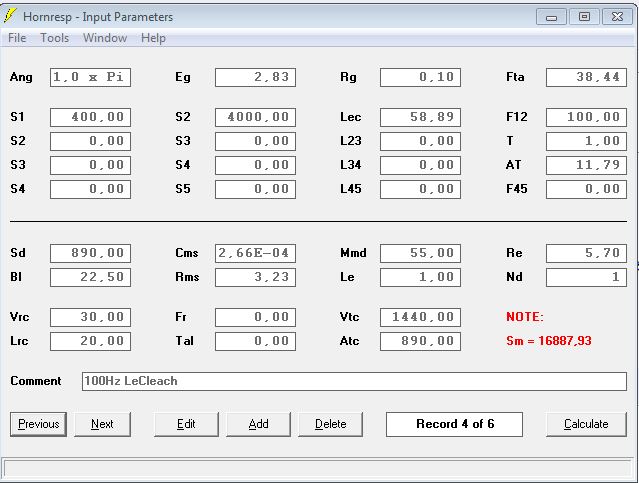
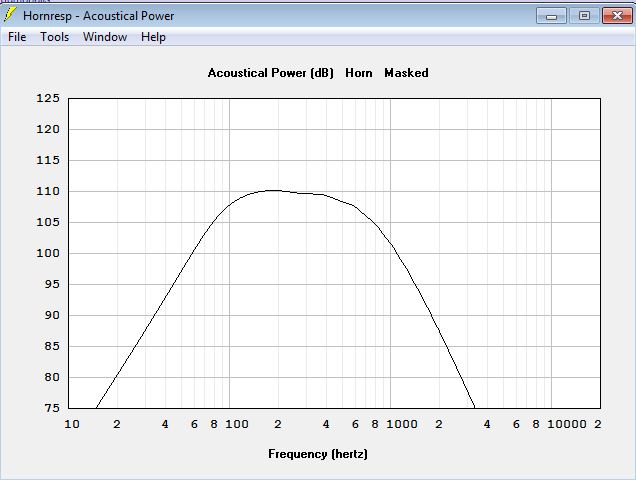
Is this for the JBL 130A?
Edit: It appears to be the JBL 2220H?
Last edited:
I called and emailed them and no luck.
They had no info. I made one of those diy boxes for getting the specs out of a driver
I will get it up and running and see what I can
Get out of it
That horn was not mine. Just a pic I took of what I would like to do. They are easy then most people think to build
They had no info. I made one of those diy boxes for getting the specs out of a driver
I will get it up and running and see what I can
Get out of it
That horn was not mine. Just a pic I took of what I would like to do. They are easy then most people think to build
Maybe 1xpi is too optimistic. The midbass horns will be placed on top of the BR-boxes, height about 55cm above the floor, close to a corner, walls and floor are concrete, ceiling is wood panel.It's 1pi, he must be building them in-wall close to the intersection of the floor and wall.
Attachments
Yes, 2220H. I already have them, else maybe I would use something smaller.Is this for the JBL 130A?
Edit: It appears to be the JBL 2220H?
It's 1pi, he must be building them in-wall close to the intersection of the floor and wall.
Yep I figured that when the 1Pi was checked off in the simulation.
Still an efficient driver. The JBL fits the bill.
That's gonna be quite the stack, if you have close to corner placement you probably are close to 1 x pi.Yes, 2220H. I already have them, else maybe I would use something smaller.
Your horn is a bit on the peaky side, if you go to the pressure screen and [ctrl]+[x] you can poke around a bit and see the built-in gain on and off axis, this is much easier to see in 2 x pi.
Then try your driver in this. It's not specific to your driver but plug the 2220H in and give it a go. You can squeeze the rear chamber down to 20l to push up the bottom end a bit. This horn is a bit of a cheat in that it is intentionally made with less directivity so as not to have big swings in gain as you move off axis.
- Home
- Loudspeakers
- Subwoofers
- Hornresp
